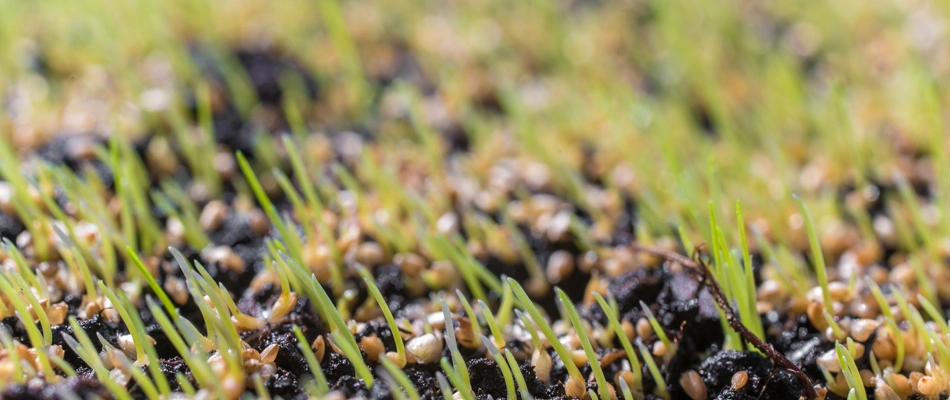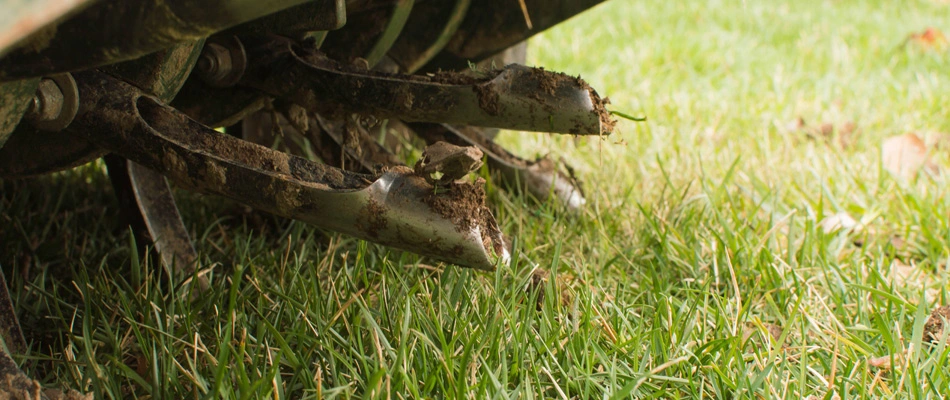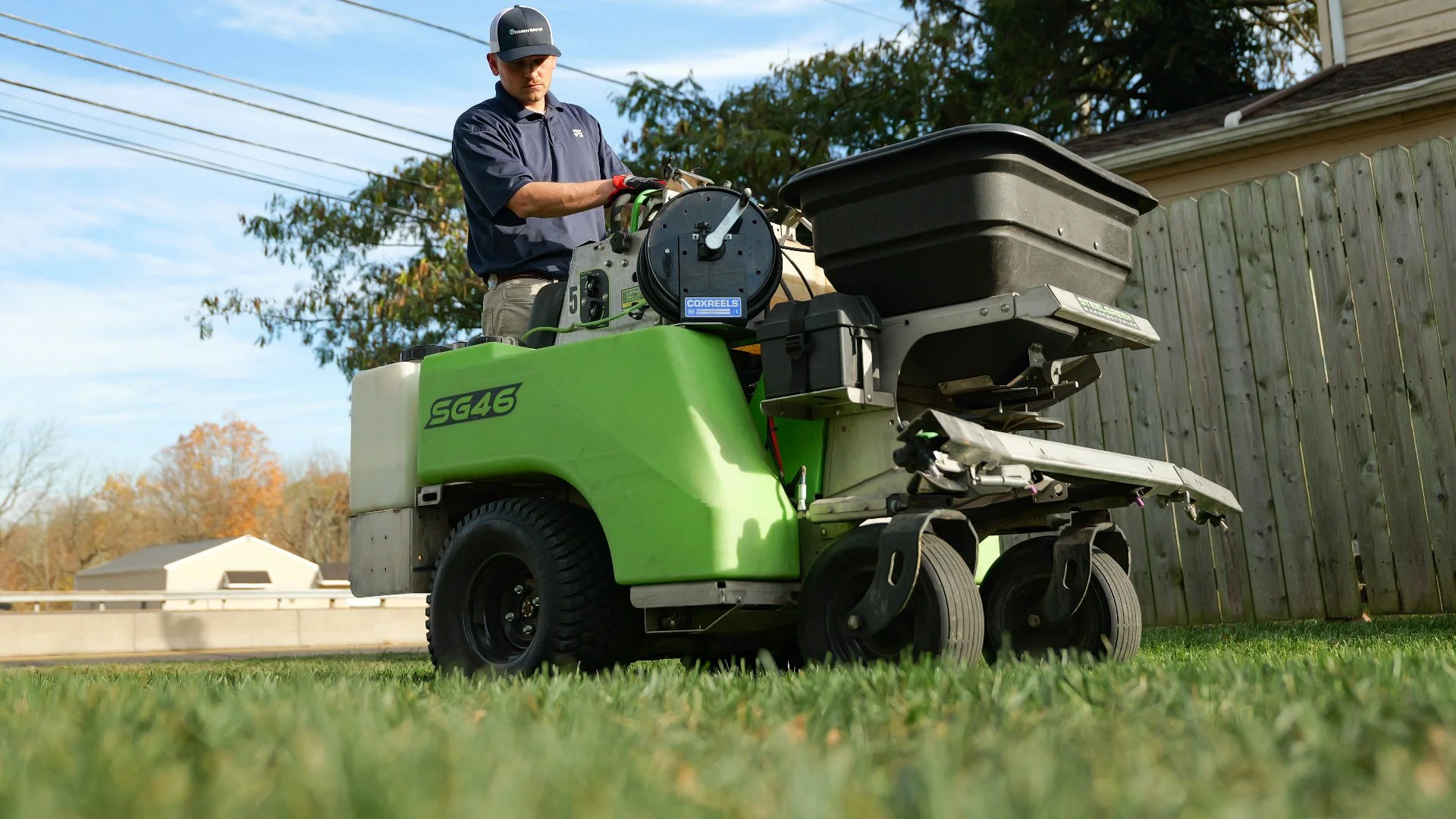Lawns in Pennsylvania consist of cool-season grass that is built for the northern climate. Cool-season grass flourishes in mild temperatures, endures the harsh winter, and struggles in the summer heat. If you want to grow new turf, you can technically spread grass seeds on your lawn in the spring or fall. However, it is far better to overseed your lawn in the fall rather than the spring. If you want to achieve the best results, you should also have your lawn aerated before seeding it. Aeration helps ensure maximum seed-to-soil contact and successful germination.
Pennsylvania Has Cool-Season Grass Types
Generally speaking, grass can be divided into two categories: warm-season grass and cool-season grass. Warm-season grass does well in warmer parts of the United States, while cool-season grass thrives in cooler parts of the country. Due to its location, Pennsylvania is home to cool-season grass types, such as tall fescue, Kentucky bluegrass, and perennial ryegrass.
Cool-season grass flourishes in the mild weather that is characteristic of the spring and fall in the Keystone State. When the temperature is between 60 and 75 degrees Fahrenheit, this type of grass grows best. It is also hearty enough to withstand harsh winter conditions, like frigid temperatures and frozen precipitation. However, cool-season grass struggles in the summer heat, making it extra prone to stress.
It is better to overseed your lawn in the fall rather than the spring.

Since cool-season grass booms in the spring and fall, you can technically spread new grass seeds on your lawn in either season. However, it is far better to overseed your lawn in the fall rather than the spring. Not only are weather conditions favorable to growth in the fall, but overseeding your lawn at this point of the year also ensures that your seeds have enough time to establish themselves in your soil before winter dormancy. With time to develop, your seeds will be able to take root and grow into full blades of grass before the winter weather arrives, which is great for their long-term viability.
That is not the case in the spring. If you spread seeds on your lawn in the spring, they will not have ample time to become established before the summer heat intensifies. As a result, they could die prematurely and leave your turf spotted with bare or patchy areas. If that happens, you will have wasted your money on good grass seed.
Ideally, you should overseed your lawn in September or October.
Aerate Your Lawn Before Overseeding for the Best Results

Before overseeding your lawn in the fall, you should aerate it to ensure the best results. Core aeration involves the mechanical removal of thousands of tiny soil plugs, or cores, from your lawn. These cores are approximately 2 to 3 inches long, and removing them provides multiple benefits to your turf.
Core aeration relieves soil compaction and also makes it easier for key resources, such as water and oxygen, to reach the roots of your grass. Another benefit is that the soil passageways formed during aeration create the ideal environment for seed germination, as they allow for maximum seed-to-soil contact. If you want to bolster your chances of successful germination, it is imperative for you to aerate your lawn before overseeding.
Call our team today to schedule our overseeding service!
Does your lawn have areas that are thin, patchy, or bare? If so, we can help you restore your turf to glory with our overseeding service. We offer our professional overseeding service to property owners in Newark, DE, Doylestown, PA, and nearby areas in Pennsylvania, including Blue Bell and New Hope.
Our overseeding service will promote new grass growth and enhance the thickness of your lawn. Notably, we overseed lawns using premium turf-type tall fescue seeds that flourish in our climate. We offer overseeding in the fall in conjunction with our core aeration service to ensure the best results for your lawn. If you're ready to sign up, call us today at (610) 328-4170!






Comments (0)
Thanks for your comment!
Thanks for your feedback! Your comments have been successfully submitted! Please note, all comments require admin approval prior to display.
Error submitting comment!
There is a problem with your comment, please see below and try again.